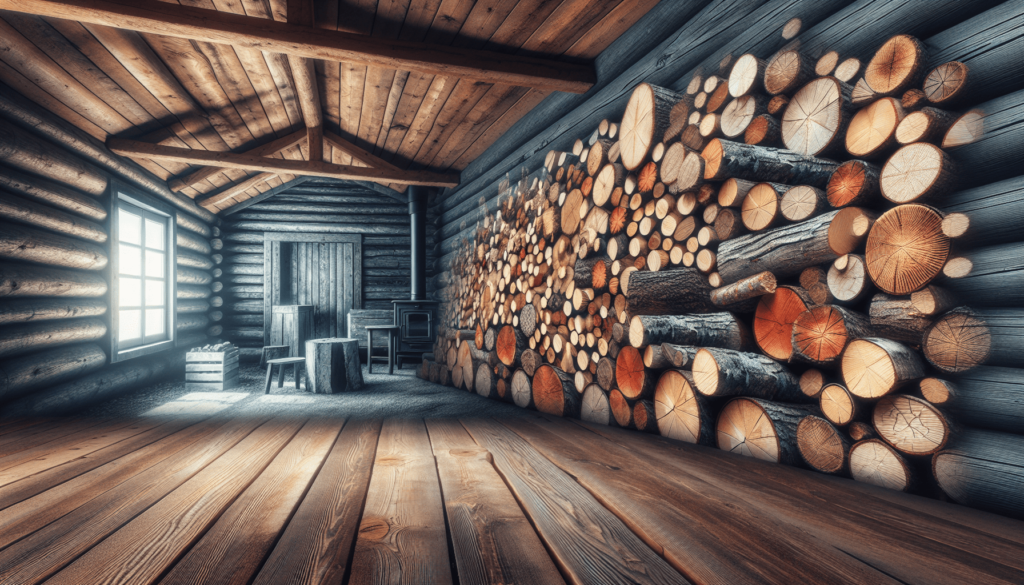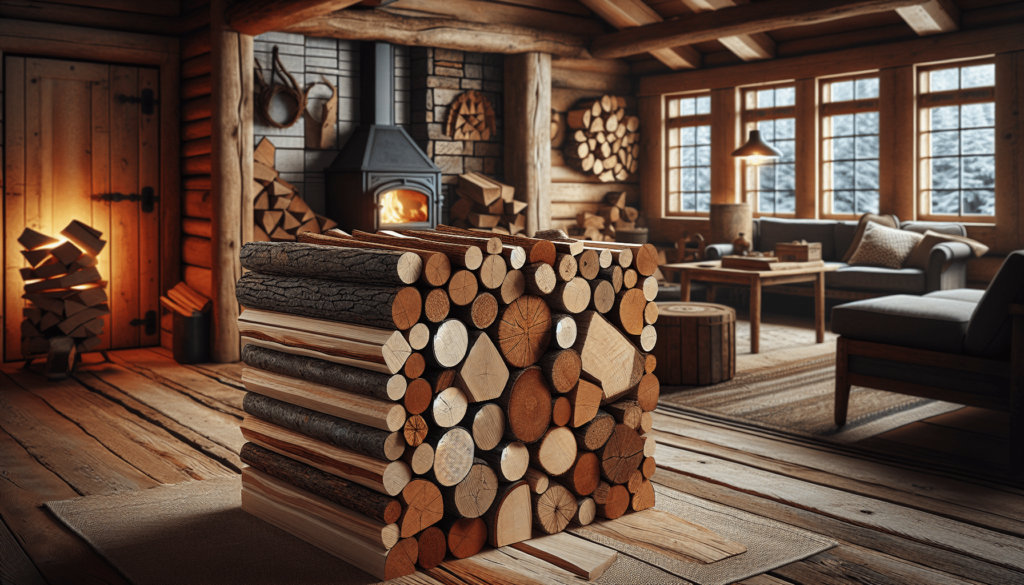When it comes to keeping your home warm and cozy with a wood burner, knowing what to use as fuel is essential. In “What Do I Need To Put In A Wood Burner?” I dive into the types of wood that are best for burning, the importance of seasoning your logs, and a few tips on maintaining an efficient and environmentally-friendly fire. From hardwoods like oak and maple to the proper use of kindling and fire starters, I’ll cover everything you need to make sure your wood burner is both effective and safe. So, if you’ve ever wondered what goes into making those crackling, toasty fires, this is the guide for you. What do I need to put in a wood burner?
That’s a question I found myself asking when I first clumsily bought a wood burner for my little cabin in the woods. I envisioned cozy nights by the fire, reading books and sipping tea. But there I was, with a shiny new wood burner, completely clueless about what type of wood or method to use. The mystery of it was both charming and utterly perplexing. So I did what any reasonable person would do: I threw in some old newspapers, crossed my fingers, and hoped for the best. Spoiler alert—it didn’t go well. Let’s save you from the same fate.

Understanding the Basics of Wood Burners
Before we get into the nitty-gritty of what to put in your wood burner, it’s essential to have a grasp of the basics. Understanding how a wood burner works will give you a head start in knowing what fuels it best and how to maintain it.
What is a Wood Burner?
A wood burner, also known as a wood stove, is a heating appliance capable of burning wood fuel and wood-derived biomass fuel. Generally, they consist of a solid metal (usually cast iron or steel) closed firebox, often lined by fire brick, and one or more air controls (which can be manually or automatically operated depending on the stove).
How Does a Wood Burner Work?
It’s a bit like a small, metal wizard. You introduce wood into the firebox, light it up, and let air flow in a controlled manner. This air control is crucial because it affects how quickly the wood burns and thus, how much heat is produced. Wood burners have flue systems to ensure the gases produced go up the chimney and not into your living space.
What Kind of Wood Should I Use?
Ah, the million-dollar question. Not all wood is created equal when it comes to burning.
Types of Wood
| Type | Advantages | Disadvantages |
|---|---|---|
| Oak | Slow burning, long-lasting heat | Takes long to season (dry out) |
| Ash | Burns well even if not seasoned | Can be expensive |
| Birch | Burns quickly, easy to ignite | Burns too fast |
| Pine | Readily available, cheap | Produces a lot of creosote (bad for chimneys) |
| Apple | Nice aroma, slow burning | Hard to find, expensive |
| Maple | Steady burn, good heat output | Can be costly, takes time to dry |
| Cherry | Pleasant aroma, steady burn | Expensive, can be hard to find |
My personal favorite is ash, because it’s forgiving even to a newbie like me. You don’t have to be an expert in “wood seasoning” to make it work.
Seasoning Your Wood
If you think seasoning is just for food, think again. In the case of wood, seasoning means drying out the moisture content to get it below 20%. Freshly cut wood, or green wood, will usually have a moisture content around 50%, and trying to burn it will make you want to pull your hair out.
Tips for Seasoning Wood:
- Split it: Wood dries better when it’s split into smaller pieces.
- Store it: Keep it in a well-ventilated area. Cover the top but leave the sides open to ensure air flow.
- Time it: As a rule of thumb, wood needs to be seasoned at least six months.
Starting the Fire
Starting a fire in a wood burner is an art form in itself. It’s one of those activities that, although seemingly simple, can be filled with small disasters. I remember once trying to light a fire and ending up with a house full of smoke. But with a little practice and these tips, you’ll be cozy in no time.
Essentials for Starting Your Fire
Here’s a checklist to get you ignited (pun intended):
- Kindling: Small sticks or dry twigs to start the fire.
- Firelighters: These can be store-bought or DIY (think wine corks soaked in rubbing alcohol).
- Matches or Lighter: Preferably long ones, so you don’t scorch your fingers.
- A Paper Log: You can use newspaper, but a paper log ensures it holds together better.
Step-by-Step Fire Starting Guide
- Open the Air Vents: This ensures that there’s enough air to fuel your fire.
- Arrange Your Kindling: Place a small amount of kindling at the bottom in a crisscross pattern.
- Add Firelighters: Nestle a couple of firelighters amongst the kindling.
- Arrange Your Logs: Place one or two small logs on top of the kindling.
- Light It Up: Ignite the firelighters with matches or a lighter.
- Close the Door: But leave it slightly ajar to let in air until the fire really takes hold.
- Add More Wood: Once you have a strong flame, gradually add larger logs.
Maintaining Your Wood Burner
Once your fire is burning brightly, you can’t just walk away. Think of it like adopting a cat, not a goldfish—it requires some ongoing care.
Cleaning Your Wood Burner
Ash will accumulate, and regularly cleaning it out will make your life easier and your fire stronger. Here’s a breakdown:
| Cleaning Task | Frequency | Description |
|---|---|---|
| Removing Ash | After Every Use | Scoop out ash to avoid buildup. |
| Cleaning Glass Door | Weekly | Use a special cleaner or vinegar. |
| Checking Flue | Monthly | Ensure no blockages or creosote. |
| Sweeping Chimney | Annually | Get a professional to do this. |
Tips for Efficient Burning
Here are some handy tips for getting the most heat without wasting wood:
- Use Dry Wood: As emphasized before, moisture-free wood is key.
- Don’t Overload: Adding too much wood can cause incomplete combustion.
- Manage Airflow: Use the vent system to control how fast the wood burns.

Troubleshooting Common Issues
Even with the best intentions, things can go awry. I’ve been there, trust me. Here are some common issues and how to solve them:
Smoke in the Room
Nothing says “cozy night in” like a room full of smoke. (Just kidding, it’s awful.) Here’s what you can do:
- Check the Vents: Make sure they’re open.
- Use Dry Wood: Excess moisture causes excessive smoke.
- Chimney Blockage: Get it checked—birds love making nests in chimneys.
Fire Won’t Light
If you’re left staring at cold, untouched kindling:
- Use More Paper or Kindling: You might not have enough to get started.
- Check Air Vent: Open it wide to ensure airflow.
- Consider Different Firelighters: Not all are made equal.
Fire Dies Quickly
If your fire fizzles out too soon:
- Add Logs Gradually: Adding too many at once can stifle the flame.
- Use Small Logs: Large logs take longer to catch.
- Keep the Door Ajar Initially: This helps the fire take hold before closing the door completely.
Excessive Ash
If you find yourself scooping out ash all the time:
- Check Wood Quality: Poor quality wood will produce more ash.
- Empty Ash Regularly: Don’t let it pile up.
Beyond Wood: Alternative Fuels
While wood is the most traditional and often the best choice, there are other fuels you might consider.
Wood Pellets
Wood pellets are a type of biomass fuel and can be used in certain types of wood burners that are designed to handle them. They are easy to store and burn efficiently.
Biomass Briquettes
Biomass briquettes are made from compacted organic matter. They burn longer and are more environmentally friendly compared to conventional wood logs.
Peat
Used more frequently in areas like Ireland and Scotland, peat can be another alternative fuel. However, it’s less efficient and not as eco-friendly.
Sustainable Practices
Of course, burning wood is not without its environmental impacts, but there are ways to make your wood-burning habit a little greener.
Use Local Wood
If possible, sourcing your wood locally can cut down on the carbon footprint associated with transporting it.
Plant Trees
For every cord of wood you use, consider planting a new tree. It helps offset the carbon emissions and promotes local ecology.
Efficient Wood Burners
Using modern, efficient wood burners can significantly reduce the amount of wood you need and minimize emissions.
Conclusion: The Warm Glow
So, there we have it—the ins and outs of what to put in a wood burner. From understanding the types of wood, how to season it, and the steps to start a fire, to maintaining your wood burner and troubleshooting common problems, it’s quite a journey. But when you hear the crackle of the logs and feel that enveloping warmth, trust me, it’s all worth it.
Next time you find yourself puzzled over what to put in your wood burner, just remember: It’s a blend of art and science, a bit like making the perfect cup of tea. And with this newfound knowledge, may your nights be ever cozier.
Feel free to share your own wood-burning adventures or ask questions—believe me, there’s always more to learn!

